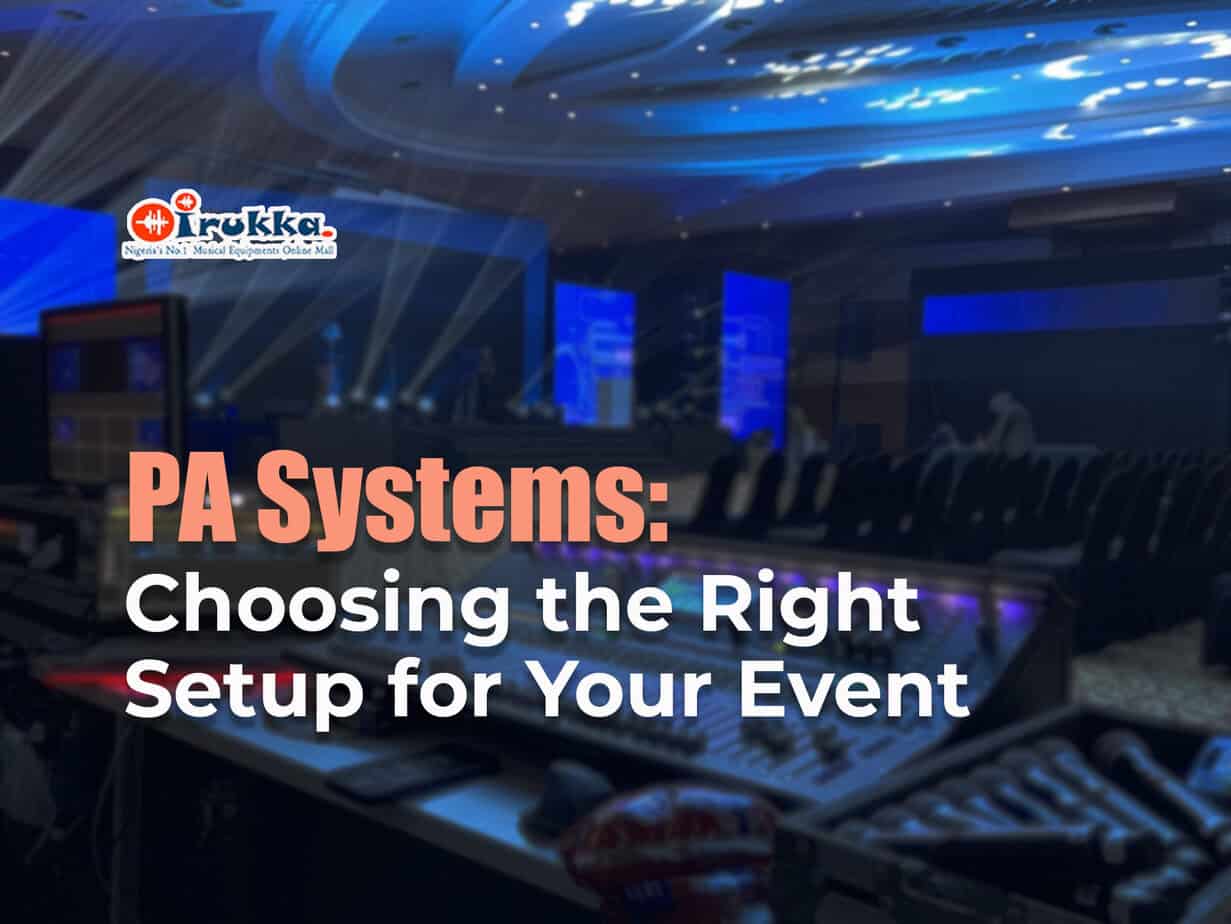PA Systems: Choosing the Right Setup for Your Event
A well-designed Public Address (PA) system is crucial for the success of any event, whether it’s a small business meeting, a large concert, a wedding, or a corporate function. Choosing the right PA system ensures that your audience hears every word, note, and beat clearly and effectively. In this article, we’ll guide you through the key considerations for selecting the ideal PA system for your event.
1. Understand Your Event Requirements:
Before you start shopping for a PA system, it’s important to understand the specific needs of your event. Consider the following factors:
Venue Size: The size and layout of your venue will dictate the power and type of PA system you need. Larger venues require more powerful systems with wider coverage.
Audience Size: The number of attendees affects the volume and dispersion requirements of your system. Larger crowds necessitate more robust setups.
Type of Event: Different events have different audio needs. For example, a conference requires clear speech intelligibility, while a concert demands high-quality sound for music.
Indoor vs. Outdoor: Outdoor events often require weather-resistant equipment and more powerful speakers to cover open spaces.
2. Components of a PA System:
A typical PA system consists of several key components:
Microphones: These capture the sound. For most events, you’ll need a mix of wired and wireless microphones. Consider handheld mics for speeches, lapel mics for presenters, and instrument mics for musical performances.
Mixing Console: This device allows you to adjust the volume and tone of each input. A digital mixer offers more flexibility and control, while an analog mixer is simpler to use.
Amplifiers: These boost the audio signal to drive the speakers. Some PA systems have built-in amplifiers, while others require external units.
Speakers: These project the sound to the audience. Main speakers cover the primary listening area, while monitors are used on stage for performers to hear themselves.
Cables and Accessories: Ensure you have high-quality cables to connect your equipment, as well as stands, cases, and other necessary accessories.
3. Types of PA Systems:
There are different types of PA systems tailored to various needs:
Portable PA Systems: Ideal for small to medium-sized events, these all-in-one systems are compact, easy to set up, and often include built-in mixers and amplifiers. They’re perfect for small venues, outdoor gatherings, and mobile DJs.
Modular PA Systems: These systems offer greater flexibility and scalability. They consist of separate components that can be mixed and matched according to your event’s requirements. They’re suitable for larger venues and more complex setups.
Line Array Systems: Designed for large venues and outdoor events, line array systems provide uniform sound distribution over long distances. They are typically more expensive and require professional setup.
4. Key Features to Look For:
When selecting a PA system, consider these important features:
Power Output: Measured in watts, the power output determines how loud your system can get. Ensure it’s sufficient for your venue and audience size.
Portability: For events that require frequent setup and teardown, look for lightweight, easy-to-transport systems.
Durability: Ensure the equipment is built to withstand the rigors of transportation and use, especially for outdoor events.
Connectivity: Check the number and types of inputs and outputs to ensure compatibility with your microphones, instruments, and other devices.
Ease of Use: User-friendly interfaces and controls make it easier to set up and operate the system, especially for those without technical expertise.
5. Practical Tips for Setting Up Your PA System:
Positioning Speakers: Place your main speakers at the front, facing the audience, and at an appropriate height. Use monitors on stage for performers.
Avoid Feedback: Position microphones away from speakers and use directional mics to reduce the chance of feedback.
Sound Check: Always conduct a thorough sound check before the event to ensure everything is working correctly and levels are properly set.
Backup Plan: Have spare cables, batteries, and other essential accessories on hand to handle any technical issues that may arise.
Conclusion:
Choosing the right PA system for your event is crucial to ensure clear, high-quality sound that engages your audience. By understanding your event’s specific needs, considering the different types of PA systems, and paying attention to key features and setup tips, you can make an informed decision that will enhance your event’s success.
At Irukka.com, we offer a wide range of PA systems and audio equipment to suit any event size and type.
Our expert team is here to help you find the perfect setup for your needs. Browse our selection today and ensure your next event sounds incredible!







